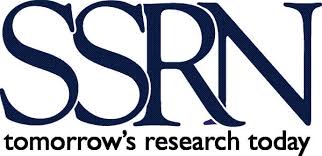INTERNATIONAL JOURNAL OF CREATIVE RESEARCH THOUGHTS - IJCRT (IJCRT.ORG)
International Peer Reviewed & Refereed Journals, Open Access Journal
IJCRT Peer-Reviewed (Refereed) Journal as Per New UGC Rules.
ISSN Approved Journal No: 2320-2882 | Impact factor: 7.97 | ESTD Year: 2013
Call For Paper - Volume 13 | Issue 11 | Month- November 2025
Scholarly open access journals, Peer-reviewed, and Refereed Journals, Impact factor 7.97 (Calculate by google scholar and Semantic Scholar | AI-Powered Research Tool) , Multidisciplinary, Monthly, Indexing in all major database & Metadata, Citation Generator, Digital Object Identifier(CrossRef DOI)
Contact Us Click Here
WhatsApp Contact Click Here
Volume 12 | Issue 12 |
| IJCRT Journal front page | IJCRT Journal Back Page |
Paper Title: CRIME DURING THE COVID-19 PANDEMIC LOCKDOWN: A SECONDARY STUDY
Author Name(s): Amandeep Singh
Published Paper ID: - IJCRT2312935
Register Paper ID - 288536
Publisher Journal Name: IJPUBLICATION, IJCRT
DOI Member ID: 10.6084/m9.doi.one.IJCRT2312935 and DOI :
Author Country : Indian Author, India, - , -, - , | Research Area: Science and Technology Published Paper URL: http://ijcrt.org/viewfull.php?&p_id=IJCRT2312935 Published Paper PDF: download.php?file=IJCRT2312935 Published Paper PDF: http://www.ijcrt.org/papers/IJCRT2312935.pdf
Your Paper Publication Details:
Title: CRIME DURING THE COVID-19 PANDEMIC LOCKDOWN: A SECONDARY STUDY
DOI (Digital Object Identifier) :
Pubished in Volume: 12 | Issue: 12 | Year: December 2023
Publisher Name : IJCRT | www.ijcrt.org | ISSN : 2320-2882
Subject Area: Science and Technology
Author type: Indian Author
Pubished in Volume: 12
Issue: 12
Pages: i306-i315
Year: December 2023
Downloads: 135
E-ISSN Number: 2320-2882
Abstract
The impact of the COVID-19 pandemic on people's lives and communities has been profound. Given the extraordinary times that the entire world is currently experiencing, it is especially critical to address concerns about crime, violence, and justice in general. Current studies have demonstrated that the COVID-19 pandemic has affected crime in part due to alterations in people's daily routines and their exposure to stressful situations. The investigation has also connected a number of previously developed theories to the modifications in crime trends that occurred during COVID-19 pandemic lockdown.
Licence: creative commons attribution 4.0
License
Keywords
Crime, COVID-19, and Lockdown.
License
Paper Title: EFFECTIVENESS OF A NURSE LED EDUCATIONAL PACKAGE REGARDING SMART PHONE ADDICTION AND ASSOCIATED HEALTH PROBLEMS AMONG ADOLESCENTS IN SELECTED SCHOOLS AT PATIALA, PUNJAB.
Author Name(s): Bimla devi Kaushal, Dr. Prabhjot Singh
Published Paper ID: - IJCRT21X0301
Register Paper ID - 274524
Publisher Journal Name: IJPUBLICATION, IJCRT
DOI Member ID: 10.6084/m9.doi.one.IJCRT21X0301 and DOI :
Author Country : Indian Author, India, 147001 , Patiala, 147001 , | Research Area: Health Science All Published Paper URL: http://ijcrt.org/viewfull.php?&p_id=IJCRT21X0301 Published Paper PDF: download.php?file=IJCRT21X0301 Published Paper PDF: http://www.ijcrt.org/papers/IJCRT21X0301.pdf
Your Paper Publication Details:
Title: EFFECTIVENESS OF A NURSE LED EDUCATIONAL PACKAGE REGARDING SMART PHONE ADDICTION AND ASSOCIATED HEALTH PROBLEMS AMONG ADOLESCENTS IN SELECTED SCHOOLS AT PATIALA, PUNJAB.
DOI (Digital Object Identifier) :
Pubished in Volume: 12 | Issue: 12 | Year: December 2024
Publisher Name : IJCRT | www.ijcrt.org | ISSN : 2320-2882
Subject Area: Health Science All
Author type: Indian Author
Pubished in Volume: 12
Issue: 12
Pages: q369-q439
Year: December 2024
Downloads: 298
E-ISSN Number: 2320-2882
Abstract
ABSTRACT INTRODUCTION "We must protect families, we must protect children, who have inalienable rights and should be loved, should be taken care of physically and mentally, and should not be brought into the world only to suffer" Mrs. Indira Gandhi. The 21st century is known as the era of information technology, when technology advancement hits civilization, parental care, and guidance slowly replaced by variety of technological innovations. The term "smartphone" was used in 1997 by Ericson. Smatphone is providing integrated services from communication, computing and mobile sectors such as voice communication, messaging, personal information management applications and wireless communication capability. The internet fuels the smartphone uses and is useful for a variety of purposes, such as convenient, rapid sharing of information, and contact with other cultures, emotional and feasibility and an easy charring of a smartphone makes it possible to use it anywhere, Because Smartphone's currently include all the features of a laptop, including web browsing, Wi-Fi, a bundle of apps. All over the world, adolescents are the more vulnerable group for the smartphone usages and abuse. According to WHO, Adolescents are defined as young people between the ages of 10 and 19 years. Today 20% of the world population is of adolescents, constituting 1.2 billion people worldwide. Nearly 243 million adolescents live in India.4 A UN report has raised concerns about the increased use of Smartphone in schools all over the world. This report shows the impact of technology shared objectives of on teaching and learning. And also abuse of technology for non-educational activities like entertainment and commercial use. UN also warned and suggested the whole countries to maintain the human -centred use of technology only to support the education, not to supplement the teachers led instructions. The Adolescents should know and use only the relevant content and ignore the unnecessary and irrelevant content. The technology has a double edge sword so adolescents should select only the use of technology to enhance their knowledgeand growth , not to replace the human relationship. 1 RESEARCH PROBLEM: Effectiveness of a nurse led educational package regarding smart phone addiction and associated health problems among adolescents in selected schools at Patiala, Punjab. BACKGROUND OF THE STUDY: It is often stated that children are the world's most valuable resources and assets, but their rights throughout the world are largely ignored often resulting into tragic outcomes. AIM OF THE STUDY: To assess the effectiveness of a nurse led educational package regarding smart phone addiction and associated health problems among adolescents in selected schools at Patiala, Punjab. METHODOLOGY: A quantitative approach with two group experimental research design was used for this study. A sample size of 560 adolescents 280 in each, from experimental and control group at selected schools of Patiala Punjab was selected using probability stratified sampling technique. Structured questionnaire and SAS scale was administered to assess knowledge regarding smartphone addiction and the prevalence of smartphone addiction among adolescents at selected schools of Patiala, Punjab. RESULTS: As the result of analysis of Section A In this study among 560 subjects , the pre- test knowledge score was only 2 (0.37%) had adequate knowledge followed by 165(29.23%) had moderate knowledge score with the remained 293 (70.50%) had shown the inadequate knowledge score regarding smartphone addiction . The Mean knowledge score of pre-test of the experimental group was 9.37(31.23%) and the Mean knowledge score of the pre-test of the control group was 9.40 (31.35%). After intervention there was a substantial gain in knowledge compared to the pre-test scores was seen with the significant difference in the adequate knowledge score of experimental group) that mean score was 21.91(73.5%) but the post test knowledge score in the control group was almost the same as pre- test with mean score of 9.55 (3.31.85%). As reported in the post test knowledge score of experimental group 189 (67.5 %) subjects have adequate knowledge score, followed by 89 (31.8%) shown moderate knowledge score, where only 2 (0.7%) subjects had reported the inadequate knowledge score. On the other hand reported in the post- test knowledge score, the subjects of the control group shown the score almost same with pre test effect that is 5(1.8%) subjects had adequate knowledge , followed by 87(31.1%) had moderate and 188(67.1%) had shown the inadequate knowledge score . In the analysis report of Section -B, Out of total 560 subjects (Experimental group, N=280 +Control group, N= 280), the majority 183 (32.67%) subjects (experimental 92 and control 91) had severe Smartphone addiction followed by 193(34.46%) subjects from both groups had reported with the moderate addiction score while the remaining 184 (32.85%) had been found at the risk or in the low addiction score. An notable effectiveness of a nurse led educational package regarding smartphone addiction among adolescents on severe addiction score of experimental group had been reported with the post- test addiction score of 4 (1.4%) that was shifted from a higher pre-test mean score of severe addiction 92 (32.5 %) of experimental group . The moderate addiction score was raised up to mean score 140(50%) from 99(35.4%) Followed by the low addiction mean score 136 (48.6%) from the 94 (33.6%) of the addiction score of experimental group .The pre-test mean percentile addiction score was 114.35 %which decreased up to post -test score of 94.71%after the intervention On the other hand the addiction score among the adolescents of the control group had remained same that was as severe 85(30.4%), moderate, 107(38.2%) and mild 88(31.4%) with the pre -test addiction score as 91(32.5%), 99(35.4%) and 90(32.1%) respectively. The post -test mean score of control group was found almost the same as 115.78% and 115.29 % of the pre test and post test respectively CONCLUSION: It was concluded in this study, that there is a noticeable effectiveness of the intervention 'A nurse led educational package regarding smartphone addiction among adolescents at selected schools of Patiala, Punjab, which had shown a substantial gain in knowledge compared to the pre-test scores as a significance difference in the pre-test and post test knowledge score among adolescents of experimental group. There is also seen a significance difference in the prevalence score of Smartphone addiction among the adolescents of the experimental group, after intervention that was shifted from severe to moderate and low addiction score .
Licence: creative commons attribution 4.0
License
Keywords
KEY WORDS: knowledge, Effectiveness, Smartphone, Smartphone addiction, adolescents.
License
Paper Title: GRAVITATIONAL ATTRACTION IS NOT REAL
Author Name(s): Inderjeet Rishiraj
Published Paper ID: - IJCRT21X0300
Register Paper ID - 274160
Publisher Journal Name: IJPUBLICATION, IJCRT
DOI Member ID: 10.6084/m9.doi.one.IJCRT21X0300 and DOI : https://doi.org/10.5281/zenodo.14637349
Author Country : Indian Author, India, 110030 , South Delhi, 110030 , | Research Area: Science All Published Paper URL: http://ijcrt.org/viewfull.php?&p_id=IJCRT21X0300 Published Paper PDF: download.php?file=IJCRT21X0300 Published Paper PDF: http://www.ijcrt.org/papers/IJCRT21X0300.pdf
Your Paper Publication Details:
Title: GRAVITATIONAL ATTRACTION IS NOT REAL
DOI (Digital Object Identifier) : https://doi.org/10.5281/zenodo.14637349
Pubished in Volume: 12 | Issue: 12 | Year: December 2024
Publisher Name : IJCRT | www.ijcrt.org | ISSN : 2320-2882
Subject Area: Science All
Author type: Indian Author
Pubished in Volume: 12
Issue: 12
Pages: q330-q368
Year: December 2024
Downloads: 252
E-ISSN Number: 2320-2882
Abstract
In the year 1980, I could derive a new gravitational formula based on push by the smallest particles rather than an imaginary magical attraction between the objects. The smallest particles or the energy packets, moving with the speed of light in every direction were already present before the emergence of planets of the universe, and the planets or the matter emerged by their complex groupings. The paper was copyrighted in 1983. Later on April 22, 2019, I found from Quora.com that Le Sage's Theory was based on my hypothesis of gravitational push, which of course was not having much experimental evidence, that's why it remained ignored. I was glad to find that one person was already supporting my hypothesis based on logical facts. Newton and Einstein have tried to explain gravitational attraction that still lacks to clarify complete working of our universe. When people compared Le Sage's Theory with Newton's theory, they found Newton's theory more acceptable because its formula was readily available to predict (not explain) most of the motions of heavenly bodies. Le Sage's theory of gravitation is a kinetic theory of gravity originally proposed by Nicolas Fatio de Duillier in 1690 and later by Georges-Louis Le Sage in 1748. The theory proposed a mechanical explanation for Newton's gravitational force in terms of streams of tiny unseen particles (which Le Sage called ultra-mundane corpuscles) impacting all material objects from all directions. During Le Sage's time mathematics was not so helpful to Le Sage's hypothesis and he was not able to develop a formula to calculate force of push between the objects. Also, there was no evidence of the presence of dark matter and the expansion of the universe. Since the 1920s, astronomers have hypothesized that the universe contains more matter than seen by the naked eye or by the use of any scientific gadgets. It is noticed, by observing unexplainable movement of galaxies, that the path of motion of galaxies is being influenced by some nearby clusters of invisible matter. On 25 August 2016, astronomers reported that Dragonfly 44, an ultra diffuse galaxy (UDG) with the mass of the Milky Way galaxy, but with nearly no star structure, is made almost entirely of dark matter. It is said that satellites are able to orbit around the planet because they are locked into speeds that are fast enough to defeat the downward pull of gravity. Everyone is aware that when we see an image of a star located several light years away, that star has already moved to a new location and we are watching its fake position at the old location. Based on my hypothesis of gravitational attraction there is another explanation for orbiting satellites and planets. Any visible attraction between two objects can be felt after a certain time interval of their presence at a location. And during that time interval, if the objects take new positions, they will deflect the resultant effect of visible attraction by their previous positions. To avoid the effect of push between the two objects, one of them has to leave the area enclosed between their common tangents before they experience the effect of push due to their previous positions. So, in order to understand and estimate visible attractions more precisely, there is a need to re-examine the hypothesis of push by particles. Einstein also assumed that the universe was static [not expanding], and he had added a term to his equations called the cosmological constant that provided a repulsive force to overcome the mutual gravity that would otherwise cause the universe to collapse. My gravitational formula predicts that the distance of Sun-Earth Lagrangian point from earth comes out to be 1370444 kilometers (1.37 million km) . The Google search shows the Sun-Earth Lagrange point, L1, is about 1.5 million km from the Earth towards the Sun, and there have been many solar observatories located here, including DSCOVR, WIND, SOHO, and ACE. Use of mathematics for scientific explanations need not be required but only for resultant output of an effect. Using any constant in any equation is equivalent to admitting that we don't know some part of the fundamentals. After Hubble's discovery [that the universe is expanding] Einstein not only withdrew his cosmological constant, but regretted ever putting it in. Another mysterious, very common observation of attraction and repulsion by magnets is being taught in the schools without any convincing explanation. A simple model depicting the working of magnet explains that the attractions between opposite poles are the result of repulsive forces.
Licence: creative commons attribution 4.0
License
Keywords
defying gravity, who discovered gravity, anti gravity, dark matter, magnet, Universe, Newton, Eisenstein, Gravity, Galaxies, Rays, Science, Research, Discovery, Big bang, stationary satellite, General Theory, cosmological constant, smallest particle, push particles, black holes, real present time, momentum, anu, Inderjeet
License
Paper Title: Behind the Cards: A Qualitative Exploration of the Lived Experiences of People with Gambling Addiction
Author Name(s): SHARON LICAROS MARIMLA
Published Paper ID: - IJCRT21X0299
Register Paper ID - 273808
Publisher Journal Name: IJPUBLICATION, IJCRT
DOI Member ID: 10.6084/m9.doi.one.IJCRT21X0299 and DOI :
Author Country : Foreign Author, Phillipines, 2300 , Tarlac, 2300 , | Research Area: Social Science All Published Paper URL: http://ijcrt.org/viewfull.php?&p_id=IJCRT21X0299 Published Paper PDF: download.php?file=IJCRT21X0299 Published Paper PDF: http://www.ijcrt.org/papers/IJCRT21X0299.pdf
Your Paper Publication Details:
Title: BEHIND THE CARDS: A QUALITATIVE EXPLORATION OF THE LIVED EXPERIENCES OF PEOPLE WITH GAMBLING ADDICTION
DOI (Digital Object Identifier) :
Pubished in Volume: 12 | Issue: 12 | Year: December 2024
Publisher Name : IJCRT | www.ijcrt.org | ISSN : 2320-2882
Subject Area: Social Science All
Author type: Foreign Author
Pubished in Volume: 12
Issue: 12
Pages: q291-q329
Year: December 2024
Downloads: 450
E-ISSN Number: 2320-2882
Abstract
Gambling has become increasingly accessible due to technological advancements and the legalization of certain gambling activities. With the increasing accessibility of gambling through technology and legalization, addiction persists despite efforts by the Philippine Amusement and Gaming Corporation (PAGCOR) to promote responsible gaming. Despite PAGCOR's oversight and efforts to promote safe gambling practices, addiction continues to be a critical problem, driven by factors like peer influence, online gambling platforms, and intense marketing strategies. This study seeks to understand the lived experiences of people with gambling addiction, aiming to shed light on their challenges and inform strategies for effective intervention and support. The study identifies key gaps in regulation, intervention, and rehabilitation programs in the Philippines, particularly highlighting how social and governmental policies fail to adequately address the personal struggles and community impacts of gambling addiction. Motivated by over two decades of experience in the gaming industry, the researcher seeks to offer insights into the lived experiences of gambling addicts, aiming to inform public policy and improve support systems for addiction. Using qualitative methods such as interviews and documentary analysis, the study focuses on personal narratives, interviewing twenty participants engaged in various forms of gambling (e.g., online gambling, slot machines, and mixed games) to understand the complex challenges they face. The study on gambling addiction in Pampanga uncovers a progression from casual gambling to severe addiction, with significant financial, emotional, and relational consequences. Initially drawn in by small wins and social influences, participants soon found themselves in cycles of debt, secrecy, and strained family relationships. The emotional toll included guilt, shame, and in severe cases, depression, with attempts at recovery often providing only temporary relief. Many emphasized the need for personal boundaries and support networks to manage addiction. This study highlights the need for stronger community support and targeted policies to address gambling's broader societal impact.
Licence: creative commons attribution 4.0
License
Keywords
gambling, PAGCOR, lived experiences, gambling addiction
License
Paper Title: STUDY ON THE INFLUENCING MECHANISM OF THE DEVELOPMENT OF SMALL AND MICRO ENTERPRISES IN ETHIOPIA
Author Name(s): Brook Kechine kassa
Published Paper ID: - IJCRT21X0298
Register Paper ID - 273799
Publisher Journal Name: IJPUBLICATION, IJCRT
DOI Member ID: 10.6084/m9.doi.one.IJCRT21X0298 and DOI : https://doi.org/10.5281/zenodo.14389284
Author Country : Foreign Author, Ethiopia, 3005 , Addis Ababa , 3005 , | Research Area: Commerce and Management, MBA All Branch Published Paper URL: http://ijcrt.org/viewfull.php?&p_id=IJCRT21X0298 Published Paper PDF: download.php?file=IJCRT21X0298 Published Paper PDF: http://www.ijcrt.org/papers/IJCRT21X0298.pdf
Your Paper Publication Details:
Title: STUDY ON THE INFLUENCING MECHANISM OF THE DEVELOPMENT OF SMALL AND MICRO ENTERPRISES IN ETHIOPIA
DOI (Digital Object Identifier) : https://doi.org/10.5281/zenodo.14389284
Pubished in Volume: 12 | Issue: 12 | Year: December 2024
Publisher Name : IJCRT | www.ijcrt.org | ISSN : 2320-2882
Subject Area: Commerce and Management, MBA All Branch
Author type: Foreign Author
Pubished in Volume: 12
Issue: 12
Pages: q205-q290
Year: December 2024
Downloads: 365
E-ISSN Number: 2320-2882
Abstract
The rationale for this study is rooted in the recognition that Micro, Small, and Medium Enterprises (MSEs) are vital to Ethiopia's economic growth and job creation. The government has established numerous institutions to facilitate the smooth functioning of MSEs, and non- governmental organizations (NGOs) are also playing a significant role in promoting their development. However, despite these efforts, the performance of the sector has not met the expectations of many stakeholders due to persistent problems.One of the main reasons for this study is to delve deeper into the mechanisms that influence the development of Micro and Small Enterprises (MSEs) in Ethiopia. The primary objective is to investigate and identify the relationships between the performance of these enterprises and various selected influencing factors. Additionally, the study aims to determine the impact of these factors on the performance of small and micro businesses.Ethiopia has long acknowledged the critical role that MSEs play in fostering economic growth and generating employment. This acknowledgment is evident in the government's efforts to create a supportive ecosystem for these enterprises. Various institutions have been established with the specific mandate to support MSEs, addressing their needs and challenges to ensure their sustainable development. These institutions provide essential services such as access to finance, training, market linkage, and policy advocacy. In parallel, NGOs are also actively engaged in promoting the development of MSEs. They offer complementary support by providing training, facilitating access to markets, and advocating for policies that favor the growth of these enterprises. The combined efforts of government institutions and NGOs have created a robust support system aimed at fostering the growth and development of MSEs.Despite these efforts, the performance of the MSE sector has not fully met the expectations of various stakeholders. Several persistent problems continue to hinder the sector's potential. These problems may include limited access to finance, inadequate infrastructure, lack of market access, insufficient managerial skills, and regulatory challenges. These issues contribute to the suboptimal performance of MSEs, preventing them from achieving their full potential and significantly impacting their contribution to the economy. Given this context, the study's main objective is to investigate the mechanisms that influence the development of MSEs in Ethiopia. By identifying the relationships between the performance of these enterprises and various influencing factors, the study aims to provide a comprehensive understanding of what drives or hinders their success. This understanding is crucial for developing targeted interventions and policies that can effectively address the sector's challenges.The study focuses on several key influencing factors that are believed to impact the performance of MSEs. These factors include access to finance, infrastructure, market access, managerial skills, and regulatory environment. By examining these factors, the study aims to determine their specific impact on the performance of small and micro businesses. This analysis will provide valuable insights into which areas require the most attention and intervention to improve the overall performance of the MSE sector. Access to finance is a critical factor for the growth and development of MSEs. Limited access to financial resources can severely constrain the ability of these enterprises to invest in their operations, expand their businesses, and compete effectively in the market. The study aims to explore the extent to which access to finance influences the performance of MSEs and identify potential solutions to address this challenge.Infrastructure is another crucial factor that can significantly impact the performance of MSEs. Inadequate infrastructure, such as poor transportation networks, unreliable power supply, and limited access to communication technology, can create substantial barriers for businesses. The study seeks to understand the role of infrastructure in supporting or hindering the development of MSEs and provide recommendations for improving infrastructure to enhance their performance.Market access is essential for the growth and sustainability of MSEs. Limited access to markets can restrict the ability of these enterprises to reach customers, generate sales, and expand their operations. The study aims to investigate the extent to which market access influences the performance of MSEs and identify strategies to improve market linkage and access for these enterprises.Managerial skills are also critical for the success of MSEs. Lack of managerial expertise and business acumen can hinder the ability of these enterprises to effectively plan, manage resources, and make informed decisions. The study seeks to assess the impact of managerial skills on the performance of MSEs and provide recommendations for enhancing managerial capacity through training and development programs.Lastly, the regulatory environment plays a significant role in shaping the performance of MSEs. Complex and burdensome regulations can create barriers to entry, increase compliance costs, and limit the growth potential of these enterprises. The study aims to examine the impact of the regulatory environment on the performance of MSEs and identify opportunities for regulatory reforms to create a more enabling environment for their development. In conclusion, this study is motivated by the need to address the persistent problems that hinder the performance of MSEs in Ethiopia. By investigating the mechanisms that influence the development of MSEs and identifying the relationships between performance and various influencing factors, the study aims to provide valuable insights and recommendations for improving the sector's performance. These insights will be crucial for policymakers, government institutions, NGOs, and other stakeholders in designing targeted interventions and policies to support the growth and development of MSEs in Ethiopia This study adopted a descriptive and explanatory research design to analyze, interpret and to commend some solutions on the influencing Mechanism of the development of Small and Micro Enterprises in Ethiopia. The descriptive research is a study designed to describe the characteristics of a phenomena and it was used to collect data concerning a certain phenomenon in respect to the conditions of Mechanism of the Development of Small and Micro Enterprises. The explanatory research design was used to analyze the effect influencing Mechanism of the Development on micro and small scale enterprise and to explain the relationship between performance of micro and small scale enterprise and some selected influencing Mechanism of the Development. A mixed research methodology was used and a mixed research approach use of both qualitative and quantitative working since it permits to get adequate information for a better understanding of the topic under investigation. Quantitative Data is structured questionnaire will be administered to a sample of 106 MSE owners/firms in Addis Ababa. This will involve a five-point Likert scale to gather information on various aspects of business operations and perceived impacts of influencing factors. Qualitative Data is Semi-structured interviews will be conducted with key informants, including senior municipal administrators, Micro and Small Enterprises Bureau officials, and MSE heads/upper management. This allows for in-depth exploration of experiences and insights beyond pre-defined questions in the questionnaire. The population of this study is MSEs in Ethiopia. The target populations of the study were composed of business owners who are involved in micro and small enterprise at Addis Ababa. The target population of this study was the business owners/firms of MSEs in Addis Ababa. A total of 106 respondents were selected from wood and metal products, textiles and clothing, food preparation and processing, and leather products companies through simple random sampling technique. The study used both primary and secondary data types. To collect primary data, questionnaires and key informant interviews were conducted with senior municipal and Micro and Small Enterprises Bureau administrators. Key informant interviews included heads of enterprise and upper management. The researcher used this technique because semi-structured interviews enable the researcher to urge or prod the respondent to disclose more details. Secondary data was gathered from a range of sources, including journals, books, websites, electronic papers, and policy documents. The data was analyzed using both inferential and descriptive statistics. Descriptive statistics were used to describe the many factors affecting MSE performance. Descriptive and inferential statistical analyses were performed on the questionnaire data from this sample. The mean and standard deviation provided an explanation for the descriptive statistics, even if multiple regression and the Pearson Product Moment Correlation Coefficient were employed. A five-point Likert scale questionnaire was utilized to gather information from 106 small and micro firms. This sequential explanatory design ensures that the study builds upon a solid foundation of quantitative data before delving deeper into the complexities of the influencing mechanisms through qualitative analysis. This approach leads to more robust recommendations and actionable insights for stakeholders invested in fostering a thriving MSE sector in Ethiopia. The results showed a weak but statistically significant link (r = 0.270*, p =.0.035) between management parameters and the performance of small and micro enterprises. Due to the fact that the p-value was smaller than.05. This demonstrates that there was a marginally favorable but statistically significant association between management and small- and microbusiness performance. Correlation study, on the other hand, reveals that there is a weakly significant and positive association between the financial and marketing aspects and the performance of small and micro organizations, with varying probability values.The result study showed a substantial and robust link (r = 0.802*, p =.0.000) between the infrastructure components and the performance of small and micro enterprises. Due to the fact that the p-value was smaller than.05. This demonstrates that there was a substantial and highly positive correlation between small and micro business performance and infrastructure. The aforementioned shows displays a favorable and statistically significant correlation (r = 0.794* p = 000) between the performance of small and micro enterprises and the political and legal regulation. This leads one to the conclusion that there was a highly significant and favorable relationship between the performance of small and micro enterprises and the political and legal regulation.According to the result, there is a substantial and robust link (r = 0.789*, p =.000) between technical characteristics and the performance of small and micro enterprises. As a result of the p-value being.000, which was below.05. This demonstrates that there was a substantial and favorable correlation between technology-related parameters and small- and micro business performance. According to the study, working place characteristics and the success of small and micro enterprises had a moderately and significantly positive link (r = 0.592*, p =.000). As a result of the p-value being.000, which was below.05. This demonstrates that there was a favorable moderate and significant association between small and micro enterprises' performance and their working environment. The results of multiple regressions, result revealed that marketing have a positive and insignificant impact on the firms performance of small and micro enterprises in Ethiopia with beta coefficient value (0.103) and p value .421 at 95% confidence level. Marketing has statistically insignificant impact on the firms performance of small and micro enterprises and marketing coefficient is meaningless to the small and micro enterprises performance.The results of multiple regressions, led that Finance has statistically significant impact on the firms performance of small and micro enterprises in Ethiopia with beta coefficient value (0.125) and p value .043 at 95% confidence level. Therefore, the researcher accept the null hypothesis. Since, finance has statistically significant impact on the firms performance of small and micro enterprises. The results of multiple regressions , revealed that Management has statistically significant impact on the firms performance of small and micro enterprises in Ethiopia with beta coefficient value (0.171) and p value .051 at 95% confidence level. Therefore, the researcher accept the null hypothesis. Since, management has statistically significant impact on the firms performance of small and micro enterprises.The variable Infrastructure has statistically significant impact on the firms performance of small and micro enterprises in Ethiopia with beta coefficient value (0.313) and p value 049 at 95% confidence level. Therefore, the researcher accept the null hypothesis. Since, infrastructure has statistically significant impact on the firms performance of small and micro enterprises.The variable Political and legal regulation has statistically significant impact on the firms performance of small and micro enterprises in Ethiopia with beta coefficient value (0.434) and p value .042 at 95% confidence level. Therefore, the researcher accept the null hypothesis. Since, Political and legal regulation has statistically significant impact on the firms performance of small and micro enterprises.The variable Technology has statistically significant impact on the firms performance of small and micro enterprises in Ethiopia with beta coefficient value (1.287) and p value .000 at 95% confidence level. Therefore, the researcher accept the null hypothesis. Since, Technology has statistically significant impact on the firms performance of small and micro enterprises. The independent variables (political and legal regulation, marketing, finance, working environment, management, technological and infrastructure elements) account for 80.30% of the variance in performance. Other factors not covered in this study account for the remaining 19.7% of the variation. The infrastructure, political and legal, and technological aspects were found to be the main determinants of SMEs' success. These elements were shown to have a high positive link with SMEs' performance in Ethiopia. Infrastructure elements have the most impact on MSE performance (0.802), followed by political and legal variables (0.794). Conversely, technology considerations impacting MSE performance have a beta value of 0.789.The study found that the performance of small and micro companies and management parameters had a weak but significant association (0.270).Similarly, the study demonstrates that, with varying probability values, there is a weakly positive and significant association between marketing and financial aspects and the success of small and micro organizations. However, the study found that, with a probability value of (r=0.592), there was a moderate and substantial association between working environment variables and the performance of small and micro organizations. The study came to the conclusion that the following factors had a statistically significant influence on the performance of Ethiopia's small and micro enterprises: finance, management, infrastructure, political and legal regulation, technology, and working environment. These findings were based on the results of multiple regression analysis. The findings highlight the critical role of infrastructure, a stable political and legal environment, and technology adoption in driving MSE success. These areas warrant prioritized attention from policymakers and stakeholders. However, the study also reveals the importance of management skills, access to finance, and a positive working environment, even though their impact might be statistically weaker. Neglecting these factors can still hinder MSE growth and overall performance. The limitations of this study, particularly the pre-determined set of independent variables, open doors for further exploration. Examining social and cultural influences, entrepreneurial characteristics, and access to business networks can provide a more nuanced understanding of the Ethiopian MSE landscape. Additionally, incorporating alternative performance measures beyond just profitability can capture the broader impact of MSEs on job creation, social progress, and long-term sustainability. By acknowledging these limitations and pursuing further research along the suggested avenues, stakeholders can refine their understanding and design more effective interventions. The proposed policy and intervention recommendations, targeting infrastructure development, political and legal frameworks, technology adoption, management skills development, access to finance, and a positive working environment, offer a starting point for creating a more supportive ecosystem for MSEs in Ethiopia. Investing in these areas can empower MSE owners to overcome challenges, unlock their full potential, and contribute meaningfully to the country's economic and social development. As MSEs flourish, they can generate jobs, create innovative solutions, and drive inclusive growth, propelling Ethiopia towards a brighter future. This study does not contain all of the elements impacting the development of SMEs since it included independent variables that were only presumed to be universal to all operators operating in the Ethiopian business environment. These include the areas of politics, law, marketing, infrastructure, finance, technology, and management. The majority of SMEs are profit-focused, so the study looked at profitability as a gauge of their development. This is because the majority of operators don't keep records, and their businesses are survival-based, so they gauge their performance by meeting their household expenses and ensuring the continuing existence of their businesses. Create a micro and small business revolving fund in each Addis Ababa woreda by assigning a fixed amount of money, allowing operators to use the funds for startup and monthly repayment. The process will be closely watched, with extension workers providing technical help as well. An alternate approach would be to offer a guarantee of work for a predetermined duration, all the while encouraging savings by establishing connections with credit and savings organizations.In Addis Ababa City, there need to be a methodical and well-run entrepreneurial training facility that offers MSE officials, extension agents, and company owners ongoing training. It evaluates current market data via extension agents, studies emerging and established business sectors, pinpoints opportunities and risks, and most importantly, talks to MSE operators about how to have a broad vision that can lead to smaller and medium-sized businesses.The FMSEs office should set up well-organized marketing sites where all producers can provide their goods for sale, with their prices and markings tagged on them and promoted jointly. This gives MSEs' products access to the market and makes it simple to promote goods through a well-organized marketing structure. Equal access to the market is possible for all operators, and it also eliminates unjust housing rent and gives them the option to focus solely on production while their goods are offered at a common market. According to the researcher, more studies might look at other industries like retail, urban agriculture, and construction and provide particular results that could have a significant impact on the growth of the nation as a whole. In addition to the previously mentioned strategies, creating a more supportive business environment is crucial for MSE development in Ethiopia. Here are some additional recommendations. Simplifying business registration processes can reduce administrative burdens and encourage formalization among MSEs. This could involve utilizing online registration platforms or one-stop shops for obtaining necessary licenses and permits. Implementing targeted tax breaks or tax holidays for newly established MSEs can incentivize business creation and reinvestment of profits into growth. Encouraging research and development (R&D) activities and facilitating access to technology can help MSEs improve efficiency, develop new products and services, and compete more effectively in the market. This could involve establishing innovation hubs, providing tax breaks for R&D investments, and offering training programs on digital marketing and e-commerce. Providing centralized access to relevant information on business regulations, market trends, funding opportunities, and best practices can empower MSE operators to make informed decisions. This could involve establishing online portals or collaborating with chambers of commerce to disseminate crucial business information. Public-private partnerships can facilitate collaboration between government institutions, training providers, and established businesses. This can lead to the development of more targeted training programs and mentorship opportunities for MSE owners.Joint Investment in Infrastructure Development Public-private partnerships can also play a key role in accelerating infrastructure development projects critical for MSE growth, such as improving transportation networks, electricity grids, and access to communication technology in rural areas. Introducing entrepreneurship education into the school curriculum can foster a culture of innovation and self-employment among younger generations. This can equip students with the skills and mindset necessary to become future business leaders. Highlighting and celebrating the success stories of Ethiopian entrepreneurs can inspire and motivate aspiring business owners. This can be done through awards programs, media coverage, and mentorship initiatives. By implementing a combination of these strategies, stakeholders can create a more supportive and enabling environment for MSEs to thrive in Ethiopia. This will contribute to a flourishing entrepreneurial ecosystem, driving economic growth, job creation, and overall national development. Building a thriving MSE ecosystem in Ethiopia requires a comprehensive and collaborative approach. The research findings provide valuable insights into the key influencing factors, but true progress necessitates addressing both the foundational elements and the practical considerations of financial empowerment, market access, skills development, supportive business environment, and a culture of entrepreneurship. Through a commitment to implementing the proposed policy and intervention strategies, stakeholders can empower Ethiopian MSEs to unlock their full potential and propel the nation towards a brighter future.
Licence: creative commons attribution 4.0
License
Keywords
Small and micro enterprises, development mechanism, influencing factors, performance
License
Paper Title: Innovative Therapeutic Approaches Based on Nanotechnology for the Treatment and Management of Tuberculosis
Author Name(s): Mr. Mohit Devidas pagar, Mr.jayvnat Dattu Rajnor, Mr. Mayur Ramesh Shewale, Prof.mrs.Kedare S.M
Published Paper ID: - IJCRT21X0297
Register Paper ID - 273319
Publisher Journal Name: IJPUBLICATION, IJCRT
DOI Member ID: 10.6084/m9.doi.one.IJCRT21X0297 and DOI :
Author Country : Indian Author, India, 420303 , Nashik, 420303 , | Research Area: Pharmacy All Published Paper URL: http://ijcrt.org/viewfull.php?&p_id=IJCRT21X0297 Published Paper PDF: download.php?file=IJCRT21X0297 Published Paper PDF: http://www.ijcrt.org/papers/IJCRT21X0297.pdf
Your Paper Publication Details:
Title: INNOVATIVE THERAPEUTIC APPROACHES BASED ON NANOTECHNOLOGY FOR THE TREATMENT AND MANAGEMENT OF TUBERCULOSIS
DOI (Digital Object Identifier) :
Pubished in Volume: 12 | Issue: 12 | Year: December 2024
Publisher Name : IJCRT | www.ijcrt.org | ISSN : 2320-2882
Subject Area: Pharmacy All
Author type: Indian Author
Pubished in Volume: 12
Issue: 12
Pages: q164-q204
Year: December 2024
Downloads: 259
E-ISSN Number: 2320-2882
Abstract
Tuberculosis (TB), derived from bacterium named Mycobacterium tuberculosis, has become one of the worst infectious and contagious illnesses in the world after HIV/AIDS.
Licence: creative commons attribution 4.0
License
Keywords
tuberculosis, nanomedicine, theranostic, diagnostic, therapeutic
License
Paper Title: Navigation stick
Author Name(s): Disha Ganesh Gawade, Samiksha Rakesh Patil, Netra Chandrakant Neman
Published Paper ID: - 2412165_271250
Register Paper ID - 271250
Publisher Journal Name: IJPUBLICATION, IJCRT
DOI Member ID: 10.6084/m9.doi.one.2412165_271250 and DOI :
Author Country : Indian Author, India, 400055 , Mumbai, 400055 , | Research Area: Science and Technology Published Paper URL: http://ijcrt.org/viewfull.php?&p_id=2412165_271250 Published Paper PDF: download.php?file=2412165_271250 Published Paper PDF: http://www.ijcrt.org/papers/2412165_271250.pdf
Your Paper Publication Details:
Title: NAVIGATION STICK
DOI (Digital Object Identifier) :
Pubished in Volume: 12 | Issue: 12 | Year: December 2024
Publisher Name : IJCRT | www.ijcrt.org | ISSN : 2320-2882
Subject Area: Science and Technology
Author type: Indian Author
Pubished in Volume: 12
Issue: 12
Pages: b560-b569
Year: December 2024
Downloads: 222
E-ISSN Number: 2320-2882
Abstract
This project introduces a smart blind stick designed to improve the mobility and safety of visually impaired individuals. The device incorporates various technologies, such as GPS, GSM, ultrasonic sensors, a water level sensor, an Arduino Nano, an Arduino Pro Mini, a panic switch, a battery, an MP3 module and a speaker.
Licence: creative commons attribution 4.0
License
November 2025
Volume 13 | Issue 11
Last Date :
30-Nov-2025
Submit Manuscript Online Impact Factor: 7.97 Review Results : Within 02-03 Days Paper Publication : Within 02-03 Days

ISSN: 2320-2882 Impact Factor: 7.97 and ISSN APPROVED Journal Starting Year (ESTD) : 2013

ISSN: 2320-2882 Impact Factor: 7.97 and ISSN APPROVED Journal Starting Year (ESTD) : 2013

CONFERENCE PROPOSAL CONFERENCE PROCEEDINGS







































































